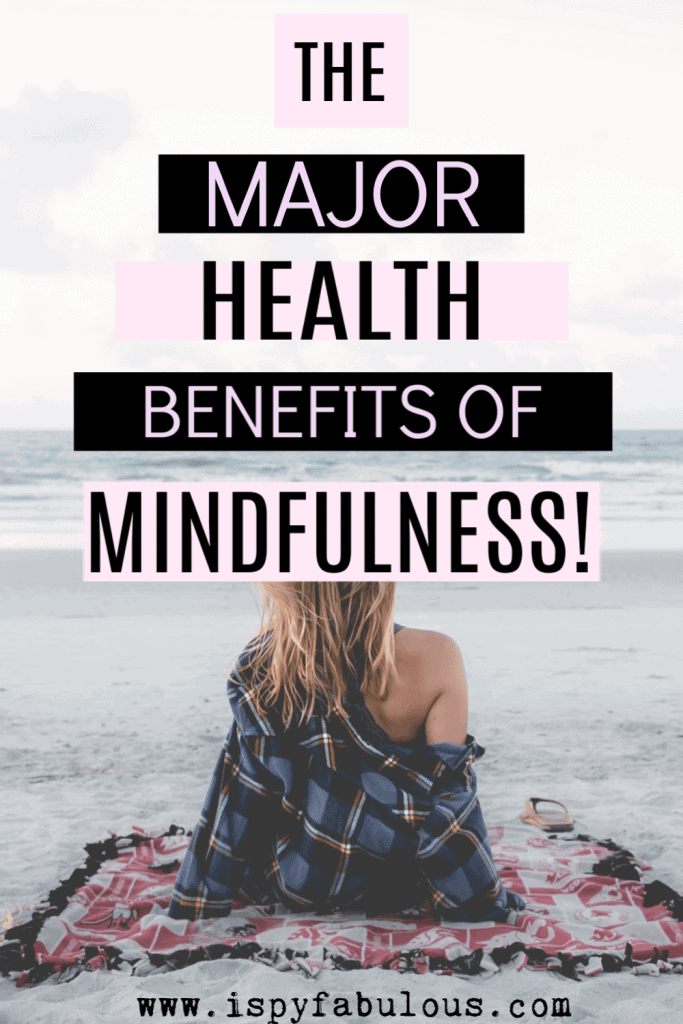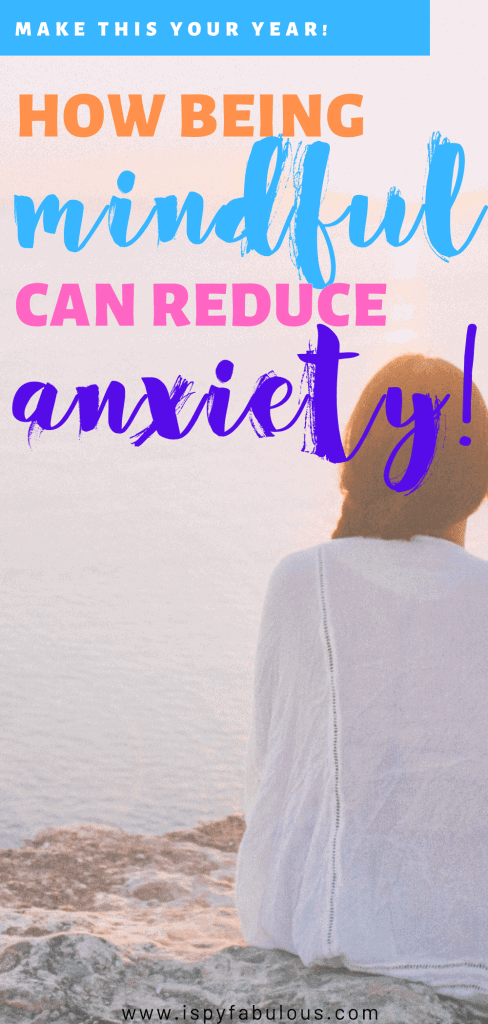

Last year was a busy year for us, full of some major life changes. While we handled these transitions as well as we could, it did throw some things out of balance, creating anxiety and stress, and as a result – my mind wasn’t always living in the present moment.
That’s why one of my big goals for this year is to live more fully in the present, without so much worry, anxiety and planning clouding my thoughts – or, in other words, practice “mindfulness“.
Turns out, I’m not the only one who could use more mindfulness this year. The other day, I read that anxiety is the most common mental illness in the United States.
Can you believe that?
So, today – I’d like to talk about how we can all easily incorporate some mindfulness into our lives, so that we can be less anxious and more able to live fully in the moment.
In no time at all, we’ll all be like Kris Jenner:
What Is Mindfulness?
Mindfulness has become a buzzword lately and I know that turns some people off. Personally, I’m a huge fan of new ideas that seem to really help people live better, more fulfilling lives.
Plus, the older I get, the more I realize how incredibly powerful our minds and thoughts really are.
In case you’re new to the idea of mindfulness – the definition is simple: “To live in the moment and reawaken oneself to the present, rather than dwelling on the past or anticipating the future” (source).
This might seem silly, but the benefits of regularly practicing mindfulness are amazing!
The Health Benefits of Practicing Mindfulness:

Once you start reading up on the benefits of regularly taking time to be fully present and not worrying about things that happened in the past or focusing on the unknowns in the future, you see how important it is to our bodies, brains and health to do this.
Some of the positive health benefits include:
- Lowering stress levels
- Reducing anxiety
- Improve coping skills
- Improve emotional regulation – or ability to come back to center
- Help with depression or reduce risk of depression
- Build confidence
- Stop spiraling thoughts
and so much more!
Basically, it’s like turning off a technological device that is spazzing out and letting it cool off and reset for a period of time before turning it back on.
I love the quote by Anne Lamott, “Almost everything will work again if you unplug it for a few minutes, including you.”
Mindfulness is similar to meditation, or the intentional practice of mentally unplugging from everything but the present and tuning your brain to the thoughts and intentions you do want for your life.
How To Practice Mindfulness:
There are different ways you can incorporate more mindfulness into your life – and the best part? They’re free!
Finally! Something is free!
- Meditate: Simply sit quietly in a position that is comfortable. Close your eyes. Focus on controlled breathing. Count your breathing if it helps you focus. Try different breathing exercises.
- Music: Focusing on a piece of music helps tune out other thoughts and creates a form of mindfulness. I play classical piano and when I just sit down and play without paying attention to anything other than the joy of music, the rest of the world just sort of vanishes. Or, listen to relaxing music. I love this so much, I started having a video maker design some relaxing music videos for me. Here’s three of them.
- Art: Maybe art is your medium. Get out some paper or a canvas, turn on some quiet, calming piano music or calming sounds without words (ocean waves, rain, etc.). The goal is to help your thoughts actively shut off, so you can fully exist in the present moment of art creation.
- Eat: For some people, food is where they are able to fully exist in the present. Choose something that really allows you to separate your thoughts from the past, the worries of the future or the stresses of the present and just enjoy. Give yourself the challenge to enjoy the entire cup of tea or coffee or your meal without letting your mind wander to anything else. Also, by being more mindful while eating, you’ll find that you listen to your body and stop eating when you are full, rather than just mindlessly shoveling food in your mouth. No? Just me?
- Walk: Many of the greatest philosophers in history were big walkers! Walking is a mindful act for some people. Start small if you’re not a great walker. Walk near home if you don’t have a lot of time. Find a beautiful trail if you need something to distract yourself. If you’re out for walk and the walk is too distracting, find a nice place to sit and practice active breathing.
- Yoga: Yoga can be an excellent way to fully detach your mind and focus only on holding the poses and breathing. The rest at the end is another great opportunity to relax. I didn’t understand how people could do yoga when I was younger, but now as a mom with littles, I absolutely love it. You’ll respond best to different types of mindful activities in different seasons of your life.
The goal here – really – is to find an activity, or no activity at all, that allows you to shut off the active, ongoing thoughts that create stress, worry, anxiety, and allow your mind and body to reset for a period of time.
I’ve known people who did guided meditation tracks while sitting in morning traffic on the way to work (just don’t close your eyes!).
You may find that what works for you in this season of your life changes in the next. Go with the flow. Don’t overthink it.
The Easy Morning Mindfulness Practice:
While the best time for mindfulness is whenever it works best for you, incorporating a mindfulness period in the morning can be a powerful way to set up the rest of your day.
Because I don’t know about you – but most mornings, this is how I feel:
So, the other day, when I happened to scroll past an awesome conversation between Dr. Mark Hyman and Dr. Chatterjee on the powerful morning routine he calls the “Three M’s“, I was all ears.
In this simple 15-minute routine, he recommends doing a series of three things: quiet mindfulness activity (he uses the Calm app), gentle movement, and mindset.
- Mindfulness: Quiet meditation or another mindfulness activity that you like
- Movement: Gentle yoga, exercise, a workout video, stretching, whatever you want
- Mindset: Repeat affirmations, meaningful mantras, or set intentions for your day.
The result? We start out day with a sense of calm and this helps us better deal with stressors, combat anxious thoughts and be more emotionally resilient as we encounter challenges.
But, I know for a busy mom (me! me!) having 15 minutes to do this isn’t aways a possibility. We all come to the table with different lives and daily requirements, so they do talk about how to adapt the morning routine to fit where you are right now in your life.
For example, you can do this routine for even 3 minutes – one minute for each task.
Or, incorporate them into your routine: take a minute of quiet meditation while in the shower, do some gentle stretching before getting dressed, then sit down for one minute and repeat mantras that are empowering to you, praying, or visualizing your intentions for the day.
And, yes – you can absolutely do these with children. In fact, most kids are very receptive to these activities as they are so much better at living fully in the present than us adults! Here are some great affirmations to choose from for your kids.
Done and done.
If these ideas speak to you, you may love Dr. Chatterjee’s bestselling books:
Practice Makes Progress:
If this idea is new for you, start with wherever you’re at and what feels comfortable for you.
Don’t beat yourself up about it if you forget, or can’t clear your head, or some days you feel like you get into the zone better than others.
Over time, you’ll get better at it – just like anything else.
I love reading more about how we can train our brain. We are very comfortable talking about how we work our bodies and train our bodies to be able to do certain things, from playing sports to musical instruments or performing feats of endurance and strength at the gym, but we don’t talk as openly about how we can do the same for our mind.
Here are a few books that have been total game-changers for me over the years. Affiliate links are used.
These two books by Eckhart Tolle are incredible:
A brilliant book that catapulted the positive psychology movement:
Here are a few books for the career-minded woman who wants to get out of her own head and being her own worst enemy:
Of course, so many women absolutely love this book. Rachel Hollis’ Instagram account is very inspiring as well and totally free:
****
There are so many great books and journals out there. Find what works for YOU!
If you’re looking for more ways you can show up for yourself this year, you’ll love this post on 10 easy ways to take care of yourself.
And, if you’re new to breathing exercises to destress, you might like my post on the 5 most effective breathing exercises for anxiety – including the best breathing apps!
Hoping this gives you some great ideas for how you can practice mindfulness and have your best year yet!
Let’s do this!
E







